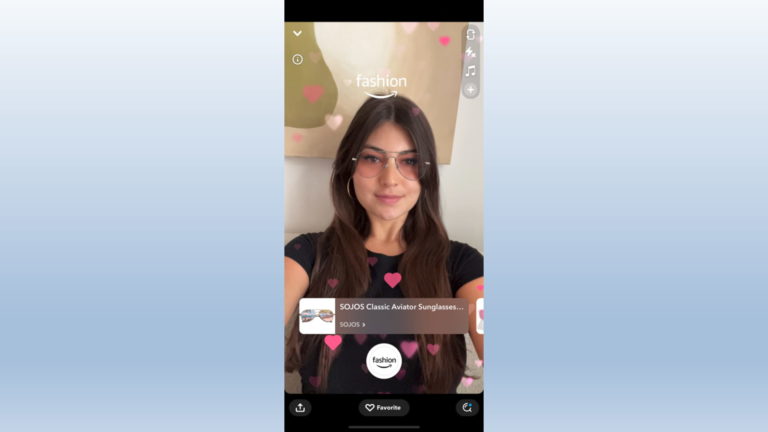
Though Apple Vision Pro was met with mixed reactions, it will have a long-term impact on the broader AR sector. Regardless of unit sales, which isn’t Apple’s primary goal for V1 as we’ve examined, it could carry Apple’s signature “halo effect” in raising all boats.
For example, there was ample momentum prior to Vision Pro in AR shopping. This entails brands and retailers that use immersive product try-ons through camera interfaces to boost buyer confidence. This already shows tangible value such as higher conversions and fewer returns.
But it also seems to be accelerating after Apple Vision Pro’s launch. Just looking at anecdotal evidence we’ve seen an uptick in product launches around AR shopping. Is this an anticipatory sign of Apple’s halo effect? Here are a few market signals so you can decide.
1. Testing the Waters
Amazon has been slowly testing the waters of immersive marketing and AR-fueled shopping. Its latest move came this week through a partnership with 3D visualization platform Hexa. It will position the latter’s low-friction 3D modeling technology for Amazon merchants to offer 3D try-ons.
As background, one of the bottlenecks in immersive marketing is 3D models themselves. Generating them traditionally requires advanced photogrammetry techniques. But those barriers have lowered recently, including Hexa’s technology that stitches 3D models from 2D photos.
With this partnership, Amazon merchants get Hexa’s technology, integrated right into their Amazon accounts. This includes standard 360 “zoom & rotate” features on 2D screens, as well as dimensional AR try-ons through a smartphone camera, which is ideal for clothing and furniture.
https://youtu.be/4dNFkV7RyG8
2. Mirror, Mirror
AR fashion company ZERO10 specializes in AR mirrors. Similar to the smart mirrors that Snap recently teased, these let users virtually try on clothes. The company had successful activations with Tommy Hilfiger and Coach, and is now launching its own prototype store.
Its first location in Paris demonstrates the technology which can be placed in-store or in shop windows. In-store placements are meant to streamline the act of trying on clothes. It brings all kinds of operational advantages including just-in-time inventory and smaller store footprints.
The shop-window use case meanwhile lets passers-by swipe through and try on various digital garments. It’s partly a gimmick to get pedestrians to stop and play with the novel feature… but it also has real business outcomes in luring some customers into the store to buy things.
https://youtu.be/92Miv-9eKRY
3. Enabling AR
Last but not least, Geenee has announced updates to its AR try-on platform. As background, the company offers a software suite that enables AR shopping for brands and retailers, including 3D modeling and advanced techniques like full-body tracking for outfit try-ons.
The latest updates include an integrated ad campaign manager. This is meant to help marketers not just build immersive marketing experiences but amplify them. This happens through a partnership with AudienceX, which enables 3D try-on functionality in common ad formats.
Geenee also now offers capabilities to integrate 3D try-on functionality in existing eCommerce sites, thus democratizing this capability for smaller brands. Lastly, Geenee’s platform now also offers smart mirrors for physical retail locations. The latter “mirrors” ZERO10’s move above.
So there you have it – just three updates from the past week. We’ll keep an eye on the longer trend.

